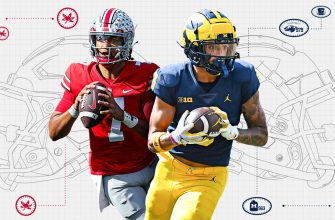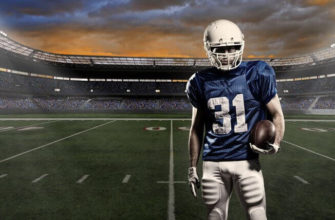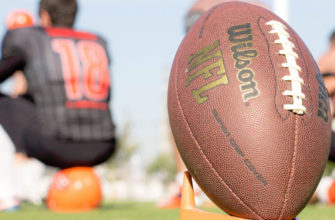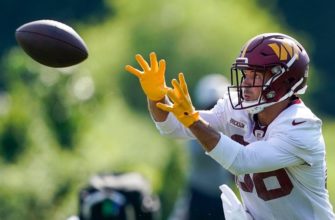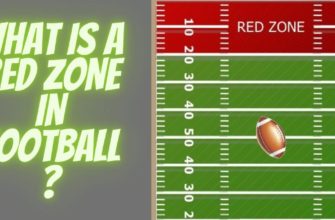Let’s compare soccer cleats and football cleats! Soccer cleats are for grass, offering great traction and maneuverability. Football cleats are for both grass and artificial turf. They feature longer, thicker studs for grip.
Surface:
- Soccer Cleats – Natural grass.
- Football Cleats – Grass and artificial turf.
Studs:
- Soccer Cleats – Shorter studs for control and less chance of injury.
- Football Cleats – Longer and thicker studs for traction.
Construction:
- Soccer Cleats – Lightweight for agility and speed.
- Football Cleats – Sturdy for stability.
Padding:
- Soccer Cleats – Minimal padding for ball control.
- Football Cleats – Extra padding to absorb impact.
Soccer players may find football cleats too heavy or bulky. Football players might struggle with soccer cleat limitations on turf. So choose footwear that matches your sport! But who’s the real winner? The one who can kick the hardest!
Key Differences between Soccer Cleats and Football Cleats

To understand the key differences between soccer cleats and football cleats, let’s dive into their unique characteristics. We’ll explore the stud configuration, upper material, and toe design of these cleats. These factors play a crucial role in determining their functionality and suitability for the respective sports.
Stud Configuration
The Stud Configuration of soccer and football cleats is important for traction, stability, and maneuverability.
It’s visualized with:
| Type of Cleat | Stud Shape | Placement |
|---|---|---|
| Soccer Cleats | Round | Evenly distributed on the sole. |
| Football Cleats | Irregular or V-shaped | Concentrated in the toe area. |
Soccer cleats have fewer studs than football cleats. This allows for natural movement on grass or artificial turf. Football cleats often feature detachable studs, giving players flexibility for field conditions.
The concept of stud configuration goes back to 1937 when Rudolf Dassler introduced interchangeable screw-in studs into soccer footwear. This changed the game. Now, stud configuration is essential for enhancing performance and reducing injuries in both soccer and football.
Upper materials for soccer and football cleats are like a luxury sports car and a beat-up minivan.
Upper Material
The upper material used in soccer and football cleats is crucial for performance and comfort. Soccer cleats usually have synthetic materials, such as microfiber or mesh. These provide flexibility and a lightweight feeling. Football cleats often use a combination of leather and synthetic material to make them more durable and supportive.
Let’s compare the upper material of soccer and football cleats in a table:
| Soccer Cleats | Football Cleats | |
|---|---|---|
| Material | Synthetic | Leather/Synthetic |
| Flexibility | High | Moderate |
| Weight | Lightweight | Heavier |
| Durability | Moderate | High |
Soccer cleats prioritize flexibility and lightness for quick movements on the field. Football cleats focus on durability and stability to handle physical demands. This difference in material reflects the playing style of each sport.
High-end soccer cleats sometimes feature advanced tech like Flyknit, for a glove-like fit and improved control. Football cleats may have extra ankle support for tackling and sudden changes in direction.
A professional soccer player once shared how his synthetic cleats helped him perform better. They were lightweight, giving him speed and agility to outmaneuver opponents.
In conclusion, players must choose cleats that fit their playing style and preferences. The right selection can greatly affect their performance. The toe design for soccer cleats is like a ballet dancer’s pointed shoes, and football cleats are more like a boxer’s steel-toed boots.
Toe Design
The toe design of soccer and football cleats plays an important part in performance, comfort, and even safety while playing.
For Soccer Cleats:
- Material: Synthetic or Full Grain
- Protection: Reinforced Toe Box
- Flexibility: More Flexible
- Traction: Designed for Agility
For Football Cleats:
- Material: Leather or Synthetic
- Protection: Steel Toe Cap
- Flexibility: Less Flexible
- Traction: Designed for Stability
A study from Sports Medicine states that wearing proper footwear can reduce foot injuries by up to 75%.
It is a hard choice to decide between soccer and football cleats, almost as hard as deciding which sport is more complicated – soccer or football.
Factors to Consider When Choosing Between Soccer Cleats and Football Cleats
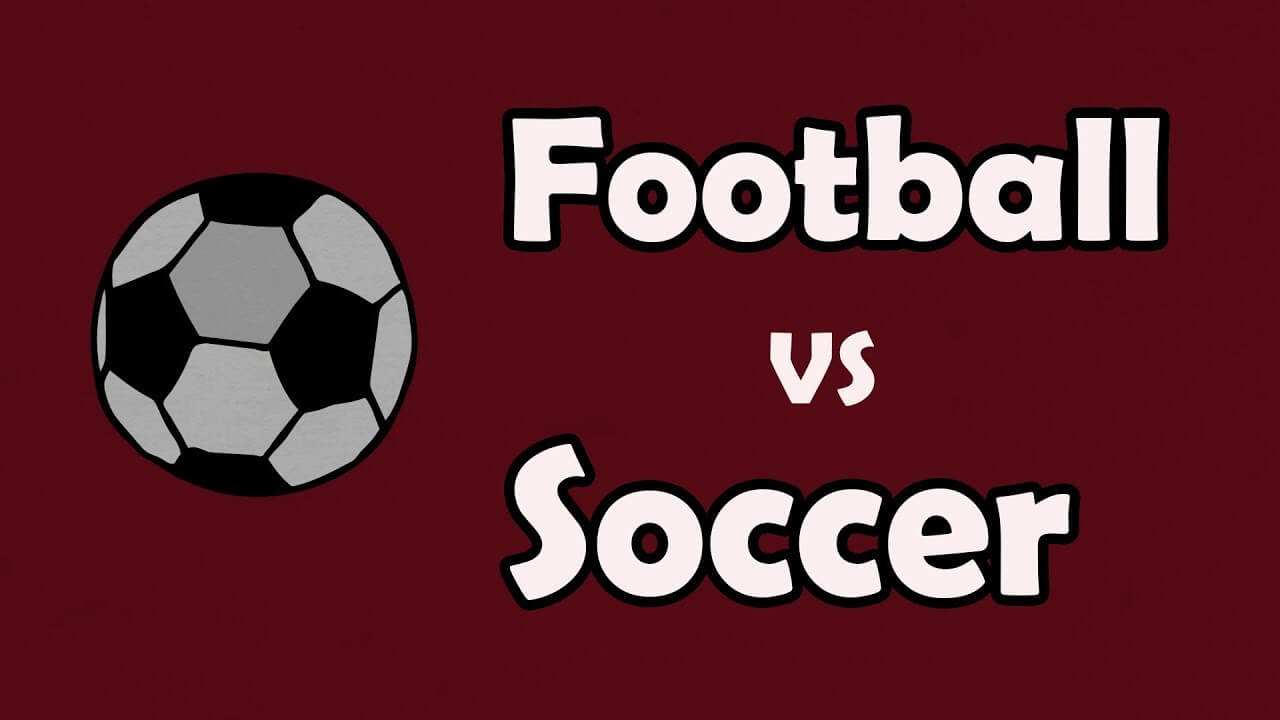
To choose between soccer cleats and football cleats based on the playing surface, position and playing style, and fit and comfort is the solution. Each sub-section offers crucial insights into key factors that influence the decision-making process. Understanding these factors will guide you in selecting the most appropriate footwear for your specific needs and preferences.
Playing Surface
When selecting between soccer and football cleats, the playing surface matters.
So, to make the best decision, check out this table:
| Soccer Cleats | Football Cleats |
|---|---|
|
|
If you want to make your opponents eat grass, get the right cleats for the job!
Position and Playing Style
Choosing the right cleats is like finding the right relationship – if they don’t fit well and make you feel comfortable, it’s gonna be a painful match! To maximize performance on the field, taking into account your position and playing style is key.
Here’s a breakdown of the preferred cleat types based on position:
- Forward/Striker: Lightweight and agile
- Midfielder: Versatile all-round
- Defender: Sturdy and protective
- Goalkeeper: Grippy and responsive
Speed and quick movements are essential for forwards and strikers, so lightweight and agile cleats are the best choice. Midfielders need versatile all-round cleats for optimal traction and support. Defenders should pick sturdy and protective cleats, whilst goalkeepers require grippy and responsive cleats.
Make sure you try on different brands and models before deciding. A good fit is a must for comfort and to avoid potential injuries during games or practice sessions. Consider your position and playing style to make an informed decision and elevate your performance significantly!
Fit and Comfort
Fit and comfort are key when choosing between soccer cleats and football cleats.
- Fit: Soccer cleats should fit snugly for maximum control and agility. Football cleats need to offer stability and support for direction changes. Try different brands and styles to find the perfect fit.
- Comfort: Look for cushioning and padding in soccer and football cleats, as well as breathable material for the upper part.
- Traction: Soccer cleats have shorter studs than football cleats, as soccer games are played on grass or synthetic turf, and football is often played on a variety of surfaces.
- Special Features: Some players may need unique cleats based on their playing style or position. For example, goalkeepers may prefer extra protection and grip, while wide receivers may benefit from lightweight yet supportive cleats.
Consult coaches or experienced players for insights. Then, look back at the history of football cleats. Early-on, there were no standardized footwear options specifically designed, so players wore leather boots similar to those used in soccer matches. However, due to frequent injuries and performance limitations, manufacturers developed specialized football cleats offering better ankle support, traction, and comfort. Now, you can look like a pro athlete – and fall on your face!
Similarities between Soccer Cleats and Football Cleats
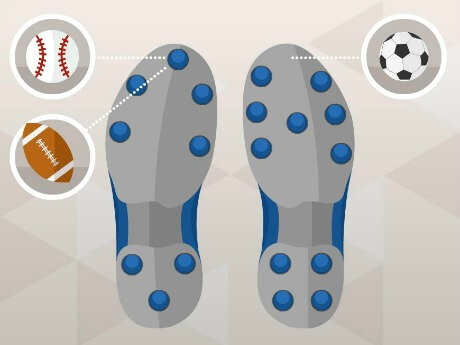
Soccer and football cleats have lots in common. They both have features that provide grip and support on the field, like studs or spikes. Plus, they’re usually made from lightweight materials to help with speed and agility.
Let’s look closer at the similarities:
| Soccer Cleats | Football Cleats | |
|---|---|---|
| Traction | Yes | Yes |
| Support | Yes | Yes |
| Lightweight | Yes | Yes |
The studs and spikes on the soles give an excellent grip on the ground, decreasing the risk of falls. They’re also built to be light in weight, so players can move quickly without feeling weighed down. But, there are some differences. Soccer cleats have a lower profile which helps with ball control. Football cleats may have more ankle support because of the physicality of the sport.
Top brands for cleats include Nike, Adidas, and Puma – your feet deserve the best!
Popular Brands of Soccer Cleats and Football Cleats
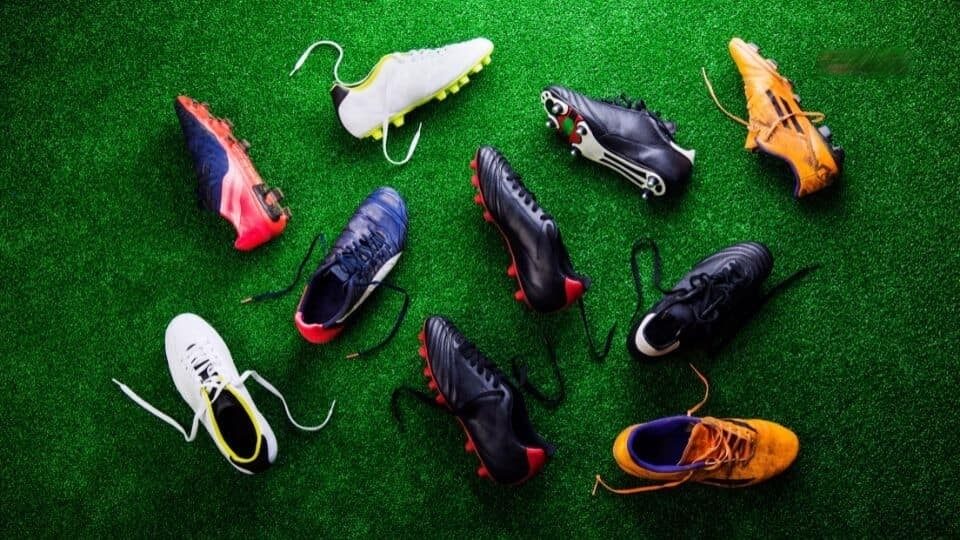
To make an informed choice between soccer cleats and football cleats, familiarize yourself with popular brands like Adidas, Nike, Puma, and Under Armour. Each of these brands offers unique solutions for both sports, ensuring optimal performance on the field. Explore the distinct qualities and characteristics of these brands and find the perfect fit for your playing style.
Adidas
Delve into the Adidas details! Notable features and models include:
- Predator, which stands out with ball control
- Nemeziz, which focuses on agility
- X Ghosted, which is lightweight and fast
- Copa Mundial, which offers classic leather comfort
Adidas also incorporates cutting-edge tech and materials for enhanced performance. They research and develop to stay at the forefront of sports footwear.
When purchasing, consider playing style and personal preferences for the perfect model. Nike says, “Look like a pro even if you can’t play like one!”
Nike
Nike offers an impressive range of performance footwear for soccer and football players. Their dedication to innovation, utilizing cutting-edge materials and technologies, sets them apart from other brands. According to Forbes magazine, they have a significant market share in the global sports footwear industry.
Model: Nike Mercurial. Price Range: $150-$250. Key Features: Lightweight, speed-oriented design with excellent traction and responsive touch.
Model: Nike Tiempo. Price Range: $100-$200. Key Features: Classic leather construction combined with modern technology for comfort and control.
Model: Nike Phantom Venom. Price Range: $120-$220. Key Features: Precision striking abilities enhanced by innovative strike zone features.
Model: Nike Hypervenom. Price Range: $80-$180. Key Features: Agility-focused design with advanced traction patterns for quick direction changes.
Make sure you don’t get outplayed – try a pair of Nike cleats and show them what you’re made of!
Puma
Puma has different types of soccer and football cleats. The models, usage, material, and price range (USD) can be seen below:
| Model | Usage | Material | Price Range (USD) |
|---|---|---|---|
| EvoPower | Attacker | Leather | 100-200 |
| EvoSpeed | Speedster | Synthetic | 80-150 |
| Future | Playmaker | Synthetic | 120-250 |
| One | All-Rounder | Leather | 150-300 |
Puma focuses on innovation and technology. Their EvoPower range caters to attackers, providing accuracy and power when striking the ball. The EvoSpeed series is tailored for speedsters. The Future line is for playmakers who need enhanced touch and control. Puma One cleats are perfect for all-round performance.
Pro Tip: Keep your Puma cleats clean and store them in a cool, dry place away from sunlight. And don’t forget that Under Armour will have you feeling like you’re running on clouds!
Under Armour
Under Armour cleats are famous for their durability, providing long-lasting performance on the field. They have advanced cushioning technology and ergonomic design too, ensuring maximum comfort. Plus, their innovative sole patterns offer superior traction for quick and precise movements.
Style-wise, Under Armour has got it covered! They have different designs and colors to suit diverse player preferences. Plus, their state-of-the-art materials enhance breathability and minimize sweat-related discomfort.
To keep your Under Armour cleats in top condition, regular cleaning and proper storage is a must. Additionally, investing in good-quality shoe inserts can provide extra support and cushioning.
Remember: selecting the right pair of cleats based on individual needs is essential. It’s recommended to try them on before purchasing to guarantee a perfect fit and optimal functionality.
Tips for Proper Maintenance of Soccer Cleats and Football Cleats
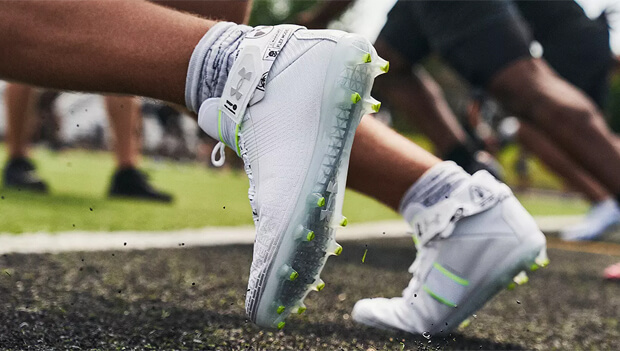
To ensure the longevity and optimal performance of your soccer cleats and football cleats, proper maintenance is crucial. Cleaning, drying, and storage play a vital role in the upkeep of your footwear. Discover the best practices for keeping your cleats in top condition, allowing you to excel on the field or pitch without any equipment-related obstacles.
Cleaning
Remove any loose dirt and debris from the surface of your cleats with a stiff brush or toothbrush. Prepare a mixture of mild soap and lukewarm water. Dip a soft cloth or sponge in the soapy water and gently scrub the upper, outsole, and laces. Avoid soaking your cleats as it can damage them. Refrain from using harsh chemicals or abrasive cleaners as they may cause discoloration or damage.
Allow your cleats to air dry. Don’t expose them to direct sunlight or use heating devices – this can warp or shrink the materials. Pay attention to areas prone to accumulating dirt, such as stitching, grooves, and crevices. Clean your cleats after every use to maintain their quality.
Cristiano Ronaldo shared his secret tip for protecting his boots during a rainy game – he applied a thin layer of petroleum jelly on his leather boots before stepping onto the field. This acted as a protective barrier and enhanced his performance.
By incorporating these cleaning practices and personalized techniques from professionals, you can prolong the lifespan of your cleats. This will help you perform at your best and save you from frequent cleat replacements. Air-drying your cleats is like sending them to a spa – they come out refreshed and ready to kick some grass.
Drying
After a hard-fought game or practice session, drying your soccer or football cleats is essential to keep them in top condition. Correct drying methods can avoid bad odours, mould and wear of materials.
Let’s look at some good ways to dry your cleats.
| Air Drying | Heat Drying |
| Let the cleats dry naturally at room temperature. | Do NOT use hairdryers or radiators. |
| Stuff the shoes with newspaper to help absorb moisture. | Heat can damage the materials and reduce performance. |
| Put the cleats in a breezy area, not in the sun. | Keep wet cleats away from fireplaces or heating vents. |
For extra support, follow these guidelines. First, take out any mud or dirt. This stops extra moisture and encourages better air flow. Second, don’t store wet cleats in confined places, such as bags or lockers, as this increases bacteria. Lastly, always clean your cleats after each use to keep them in great shape.
By sticking to these suggestions, you can dry your soccer or football cleats without compromising on quality. Air drying is a gentle and natural way to evaporate moisture, while heat drying can be damaging. Look after your cleats and they’ll give you the best performance on the field. Treat them to a shoe bag – not for company, but to cut down on smell!
Storage
To keep your soccer cleats in top condition, you must store them properly.
Here are some tips and suggestions:
- After each use, clean with a soft brush or cloth. This stops grime building up and damaging the materials.
- Let them air-dry naturally. Avoid using heat sources like radiators or hairdryers – they can cause the leather or synthetic materials to shrink or crack.
- Stuff them with newspaper or shoe trees. This will maintain their shape and absorb excess moisture and odors.
- Store in a cool, dry place. Avoid direct sunlight and extreme temperatures – too much heat can warp the soles and too much humidity causes mold.
- If possible, use a breathable bag or container to protect from dust and damage.
Follow these storage steps to keep your cleats comfy and effective. It’ll save money and enhance your performance during games.
Don’t forget – you can’t score goals if those cleats are falling apart! So take care of them!
Frequently Asked Questions
Q: What is the difference between soccer cleats and football cleats?
A: Soccer cleats are designed for use on natural grass surfaces. They typically have studs or blades that are shorter and more numerous than those on football cleats. Football cleats, on the other hand, are designed for use on a variety of surfaces including natural grass, turf, and artificial surfaces. They generally have longer, fewer studs or blades that are more widely spaced.
Q: Can you use soccer cleats for football?
A: While you can technically use soccer cleats for football, it’s not recommended. Soccer cleats are designed specifically for grass surfaces and are not meant to withstand the wear and tear of other surfaces like turf or artificial turf. Additionally, the shorter and more numerous studs on soccer cleats can be dangerous on harder surfaces like turf, increasing the risk of knee and ankle injuries.
Q: Can you use football cleats for soccer?
A: Football cleats can be used for soccer, but they may not be the best choice. The longer, fewer studs on football cleats can make it difficult to pivot and change direction quickly on grass surfaces. Soccer cleats also provide more cushioning for the foot, which can be important during extended periods of running on grass.
Q: What should I look for in soccer cleats?
A: When shopping for soccer cleats, you want to look for a comfortable fit, good support, and durability. The studs or blades should be specific to the playing surface, with shorter studs or blades for natural grass surfaces and longer ones for turf or artificial surfaces.
Q: What should I look for in football cleats?
A: When shopping for football cleats, you want to look for a snug fit, good support, and traction. The studs should be specific to the playing surface, with longer, more widely spaced studs for natural grass surfaces and shorter, more numerous studs for turf or artificial surfaces.
Q: Can I wear soccer or football cleats for other sports?
A: Soccer and football cleats are designed specifically for the needs of those sports and may not be appropriate or safe for other sports. It’s generally best to invest in sport-specific shoes for the activity you’ll be doing.
Conclusion
Soccer and football cleats both have their place, but there are distinct differences. Soccer cleats prioritize agility, with a lower profile and shorter studs. They are thinner and lighter for better ball control. Football cleats are designed for stability, with longer, thicker studs for turf. Soccer cleats offer sensitivity for passing and shooting, while football cleats provide protection and support.
It’s vital to choose the right footwear for the sport. Wearing the wrong cleats can lead to injuries such as sprains or fractures. Sports Medicine Australia found that sport-specific cleats are key for optimal performance and safety.
Ultimately, the two cleats have different designs for the different demands of each sport. Choosing the right ones is essential for athletes to perform and stay safe.


